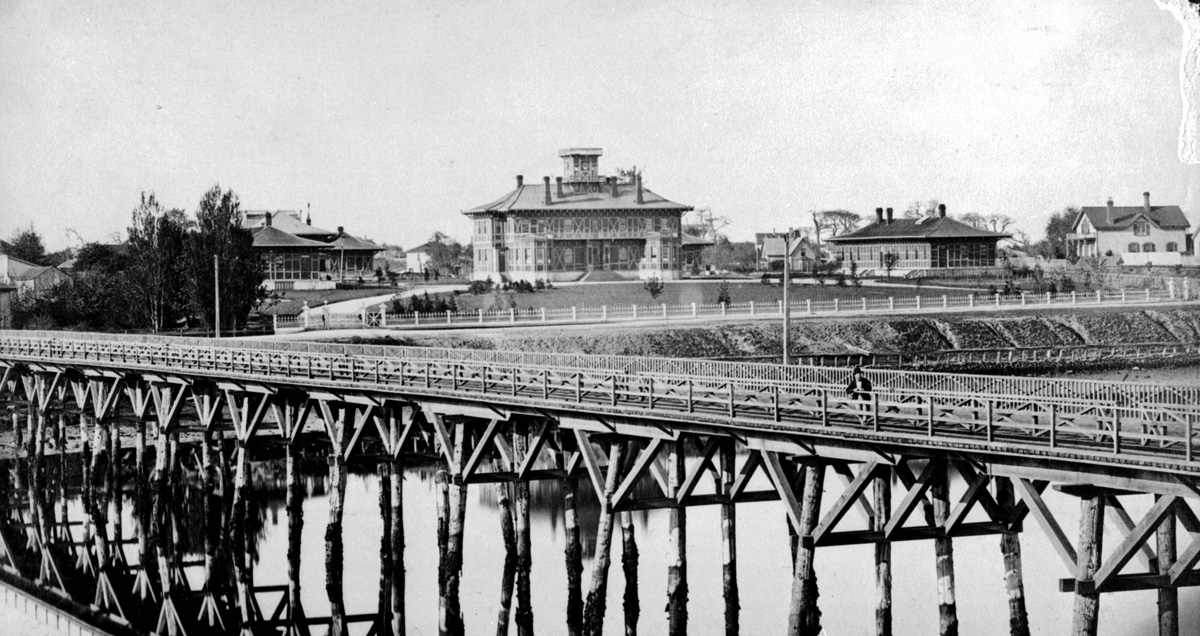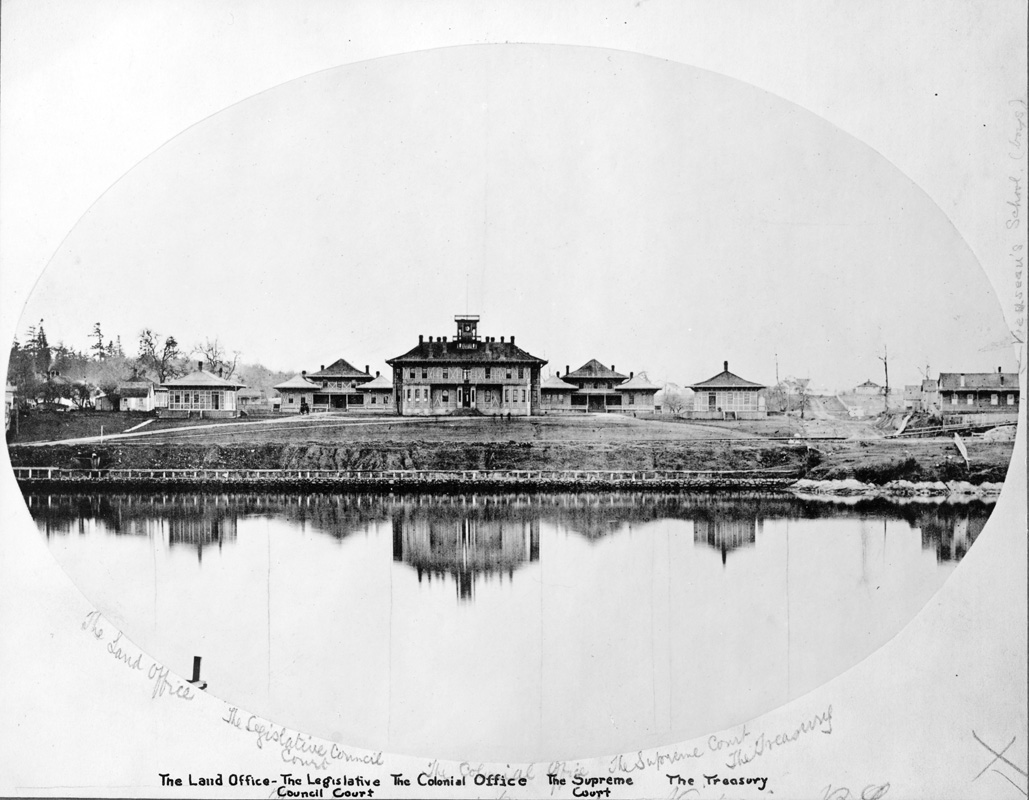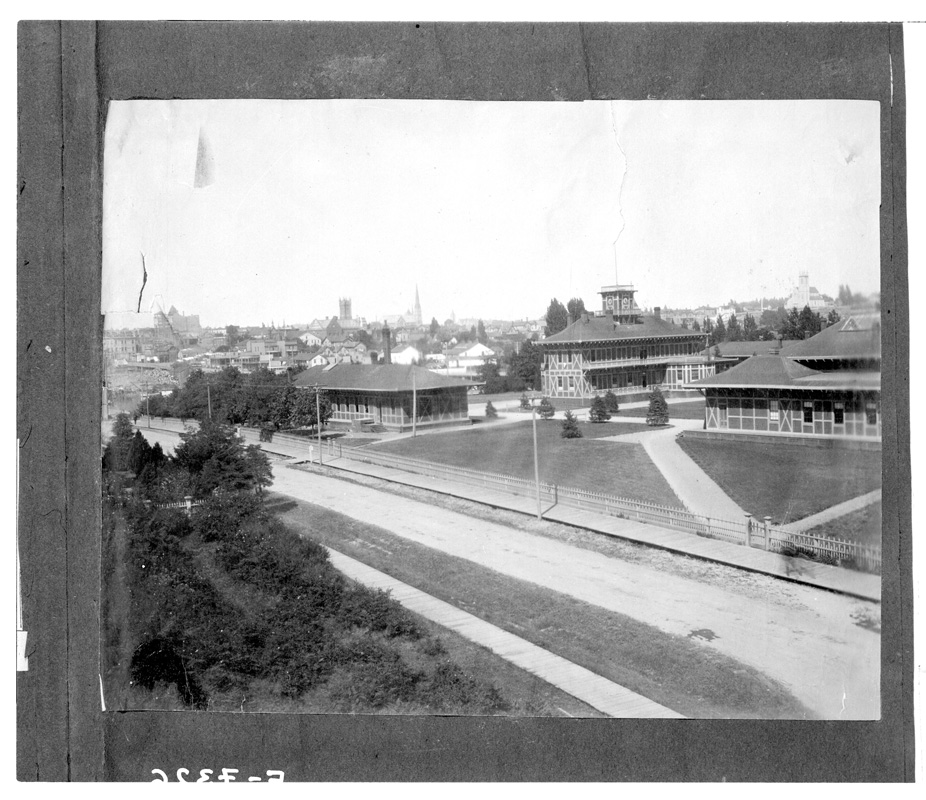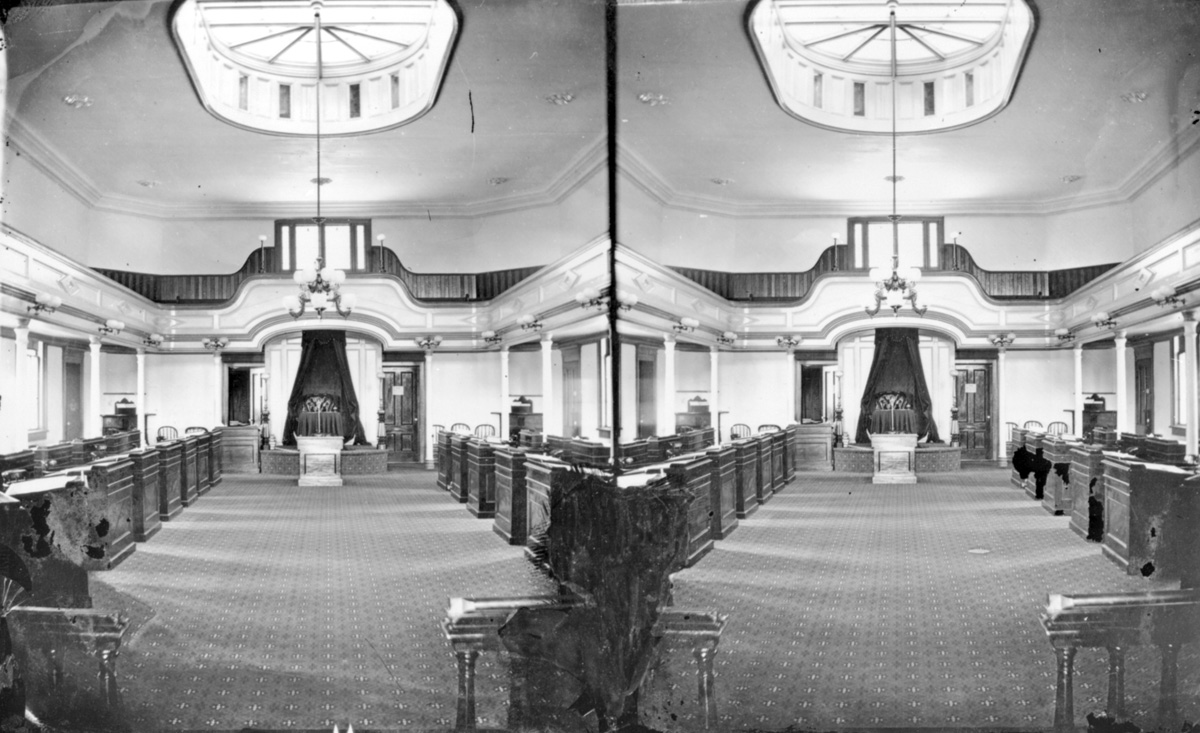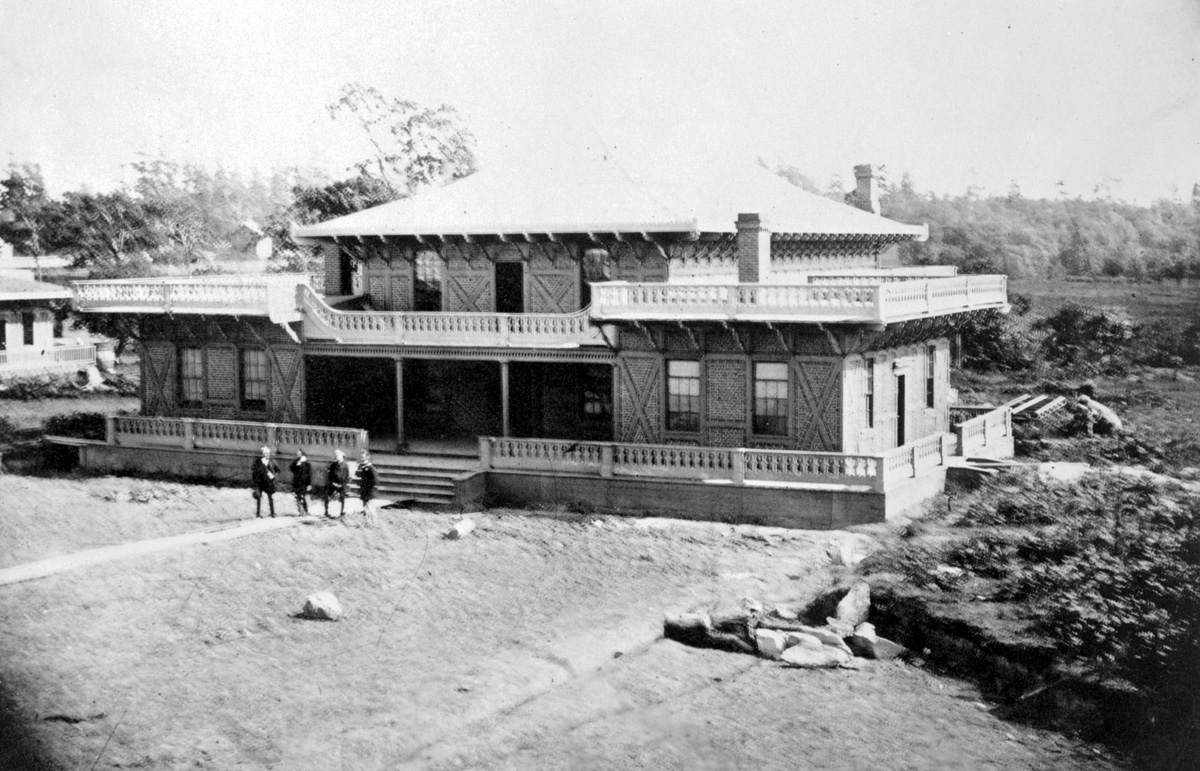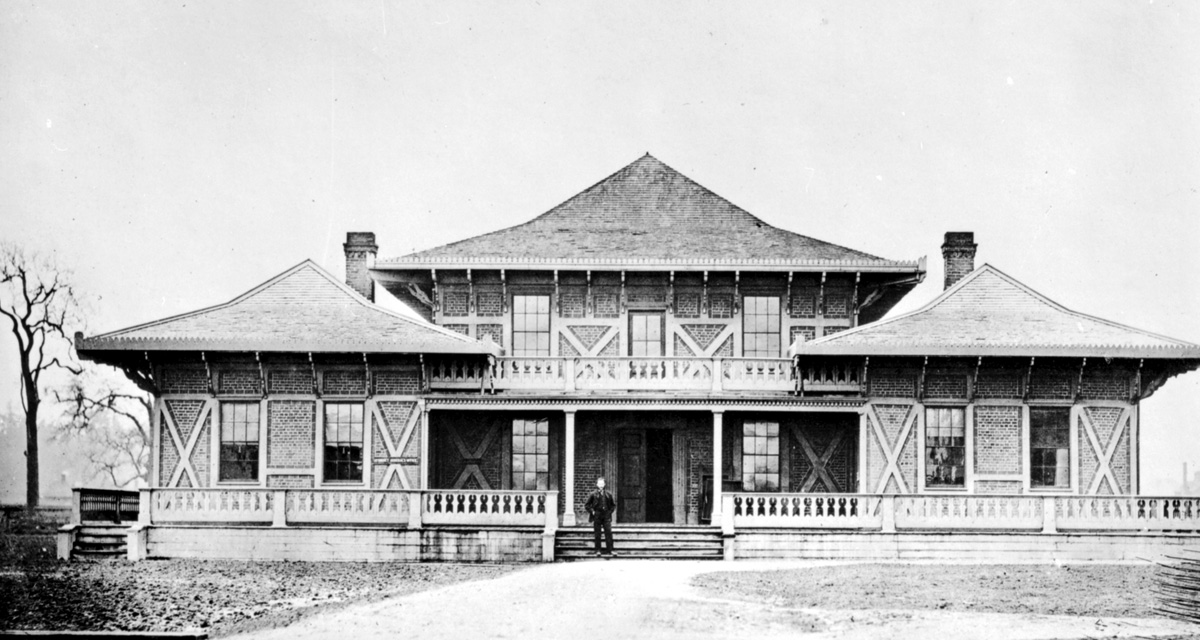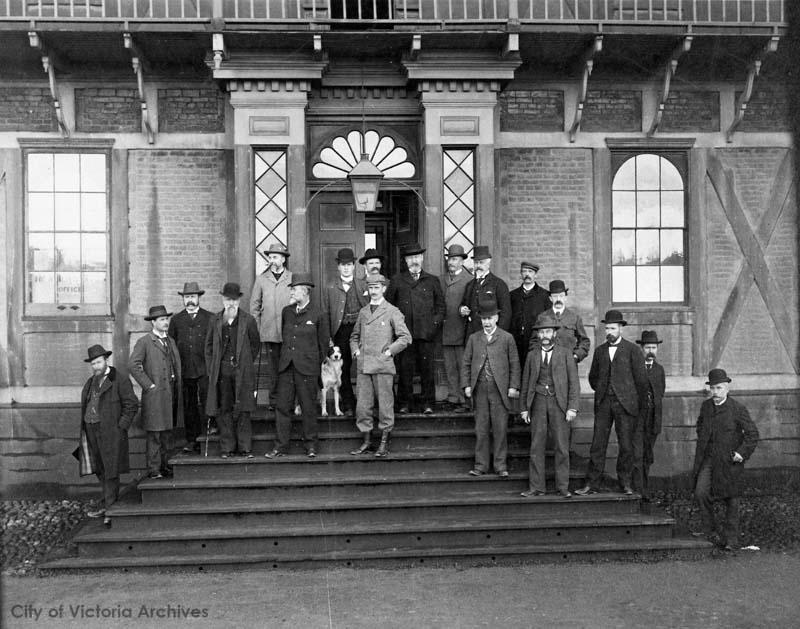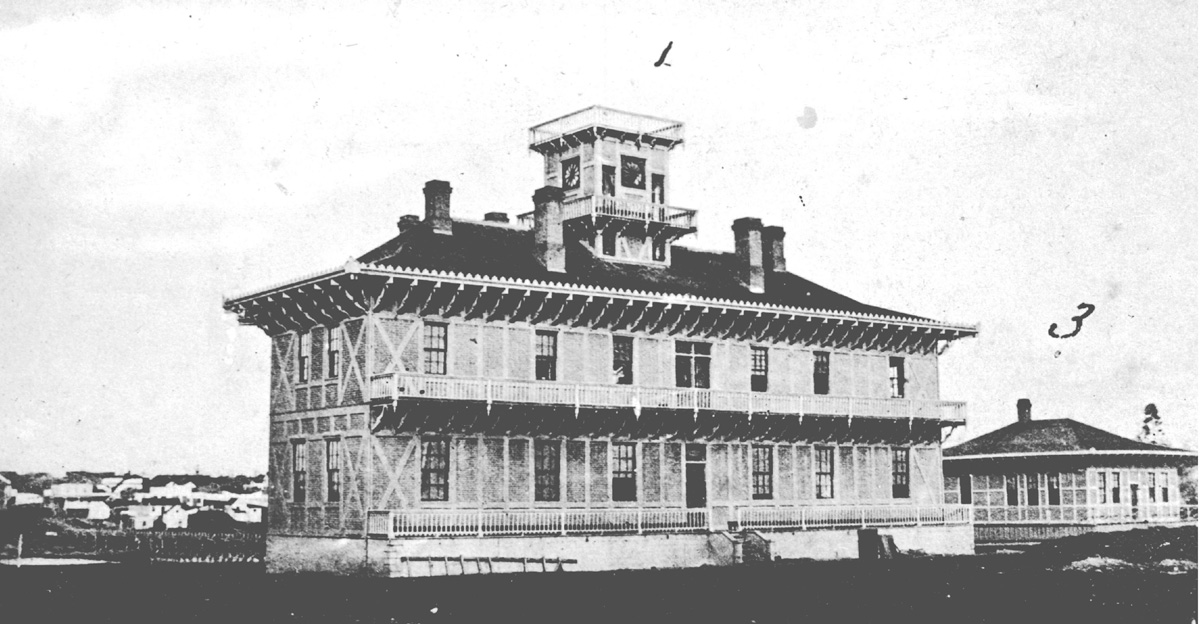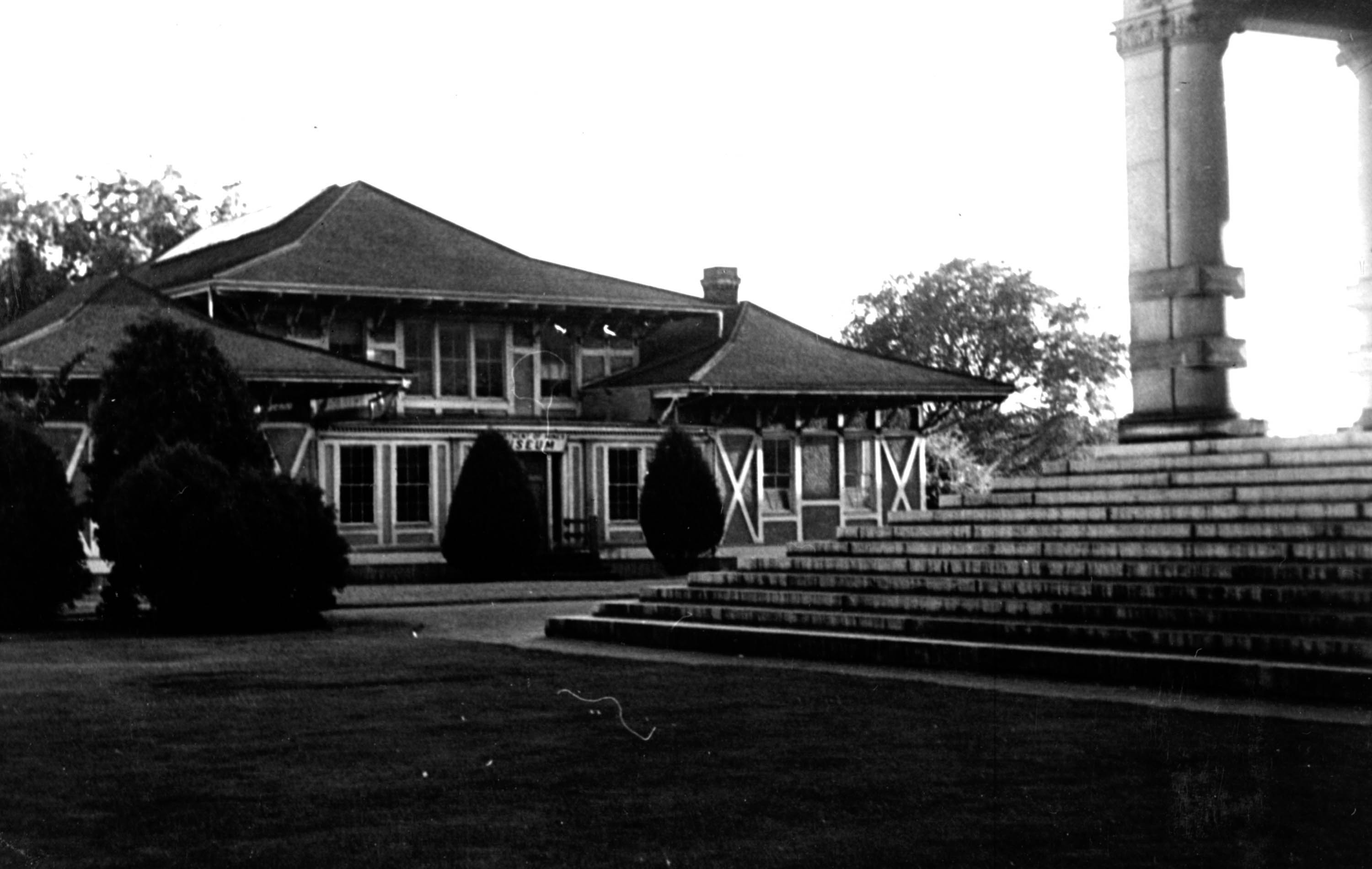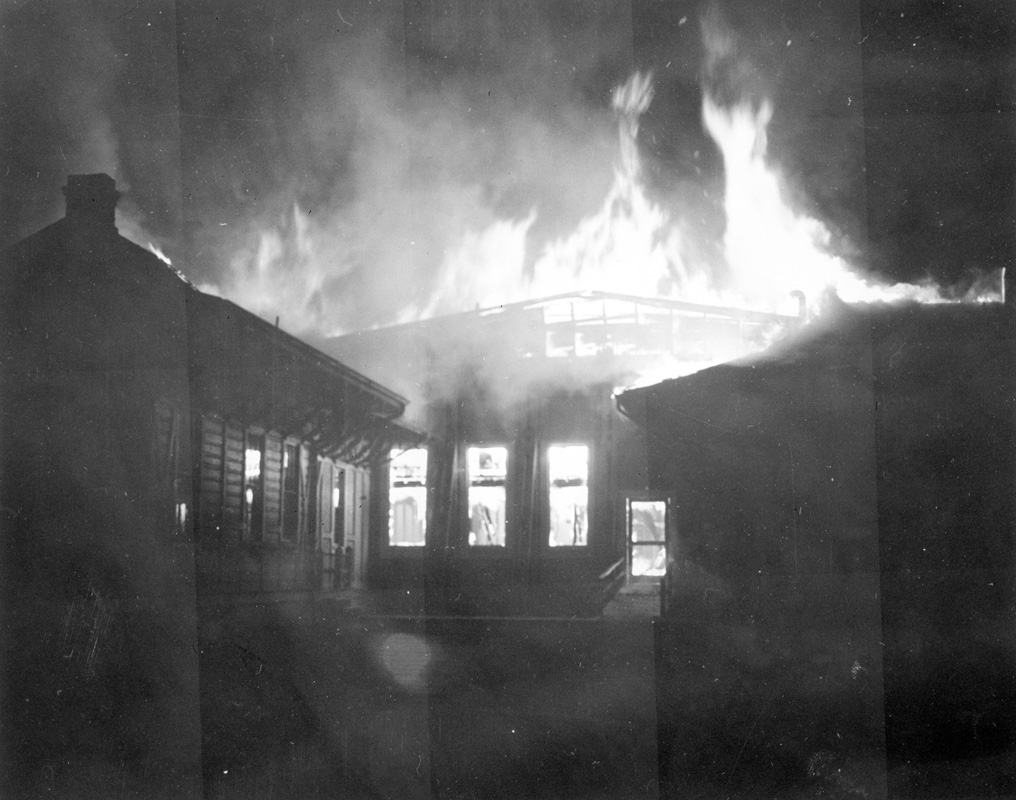The Fraser River gold rush of 1858 transformed Victoria. Built as a Hudson's Bay Company fur trading fort adjacent to a Songhees village, Victoria became the capital of the Colony of Vancouver Island and the hub for tens of thousands travelling from San Francisco and beyond to the gold fields of B.C.'s interior. The gold rush also spurred the British government to formally claim sovereignty over the Pacific Northwest by establishing the mainland Colony of British Columbia, despite the fact that both Vancouver Island and the mainland were largely unceded by the Indigenous peoples that lived there. James Douglas, the Governor of Vancouver Island and the former Chief Factor of the Hudson's Bay Company, became the Governor of both colonies in 1858.
Douglas recognized the need for administrative buildings adequate for the two colonies. He also supported the choice of a site along James Bay, the location of the present Parliament Buildings. Although somewhat removed from the town, a bridge across James Bay (where Government Street currently crosses in front of the Fairmont Empress Hotel) improved access.
The group of six Colonial Administration Buildings, built in 1859, was described in the press as a "mixed style of architecture, the latest fashion for Chinese pagoda, Swiss-cottage and Italian-villa fancy birdcages." (Victoria Gazette, June 23, 1859.)
These "Birdcages" included the first purpose-built Parliament House, which served as the home for B.C.'s Legislative Council and government until the present Parliament Buildings were completed. This building was relocated to make room for the present Parliament Buildings. The original Legislative Council building, the last of the Birdcages to survive, served as a mineral museum for the Department of Mines until it burned down in 1957. This was not long after the government had recognized the heritage value of the building and made a commitment to relocate and preserve it.
The architect of the Birdcages was Hermann Otto Tiedemann, a German who moved to Vancouver Island in 1858, and who is now considered to be the colony's first professional architect. Tiedemann took his inspiration for the Birdcages from a "colonial bungalow" design that originated out of British-occupied India and combined it with European influences, such as those mentioned in the newspapers as being stylized after a "Swiss-cottage and Italian-villa…". Teidemann was involved with other projects of historical significance in British Columbia as well. It is suspected that he designed the Fisgard Lighthouse (the first lighthouse on Canada's west coast) and that he studied the feasibility of constructing a road from Bute Inlet to the interior of B.C., the same road that would later instigate the infamous "Chilcotin War."
